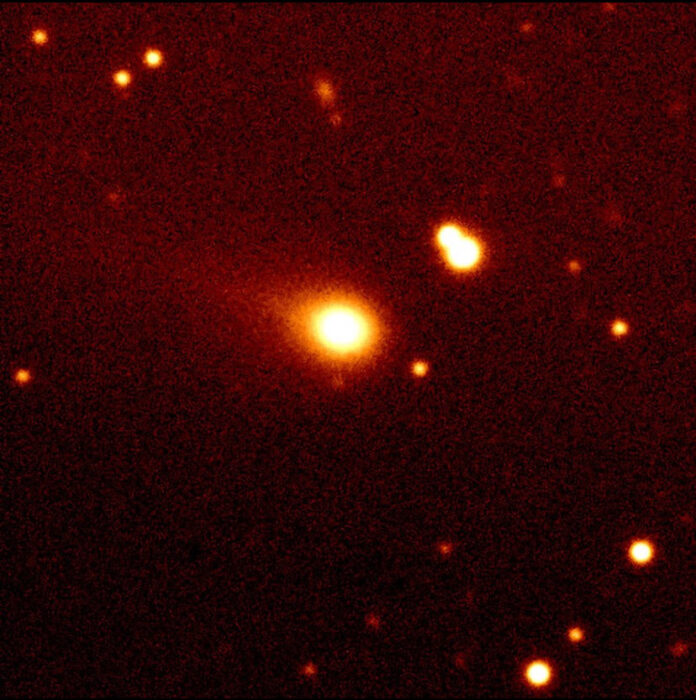
Key Developments
- Independent researcher David Sereda reports observing structured light pulses from interstellar object 3I/ATLAS on October 13, 2025, exactly 108 years after the Miracle of the Sun at Fatima
- The claimed pulse pattern of 5, 8, and 13 flashes matches the Fibonacci sequence, a mathematical pattern found throughout nature that leads to the Golden Ratio of 1.618
- NASA’s Solar Dynamics Observatory went offline concurrent with the observations, preventing independent verification as 3I/ATLAS approaches its closest point to the sun
By Samuel Lopez | USA Herald
WASHINGTON — David Sereda, an author and filmmaker who has worked with MIT physicist Bogdan C. Maglich on nuclear fusion research, reported unusual light emissions from the interstellar visitor 3I/ATLAS on October 13, 2025, claiming the pulses followed the Fibonacci sequence on the 108th anniversary of the Miracle of the Sun at Fatima.
According to Sereda’s October 13 report, the object emitted light flashes in a pattern of 5, 8, and 13 pulses—numbers that appear consecutively in the Fibonacci sequence (1, 2, 3, 5, 8, 13, 21, 34, 55…). This mathematical sequence, where each number is the sum of the two preceding ones, produces the Golden Ratio (Phi) of approximately 1.618 when consecutive numbers are divided, a proportion that appears throughout natural systems from nautilus shells to galaxy spirals.
The timing coincides with the anniversary of the October 13, 1917 Miracle of the Sun at Fatima, Portugal, when an estimated 70,000 witnesses reported seeing unusual solar phenomena during a Marian apparition event.
Sereda noted that NASA closed the Solar Dynamics Observatory during the period when 3I/ATLAS could have been observed near the sun, preventing verification of the claimed light pulses through standard solar monitoring equipment. The observatory’s closure means no continuous animation of the object’s behavior during this critical observation window is available to the public.
Additionally, Mars HiRise imaging systems that could potentially capture data on 3I/ATLAS have been unavailable since October 1, 2025, and remain offline as of this report.
The interstellar object is projected to reach what Sereda calls its “bulls-eye target” between October 19–25, 2025—a window that is now opening. However, 3I/ATLAS will pass behind the sun from Earth’s perspective during this timeframe, making direct observation impossible without space-based instruments positioned elsewhere in the solar system.
The object’s perihelion—its closest approach to the sun—is expected October 29–30, 2025.
Sereda also highlights that on Christmas Day, December 25, 2025, 3I/ATLAS will reach its maximum closest position to Earth while simultaneously achieving what he terms the “Great Pyramid Angle” relative to our planet, though he has not publicly detailed the geometric calculation behind this claim.
Interstellar objects are extremely rare visitors to our solar system. Only three have been confirmed: 1I/’Oumuamua (discovered 2017), 2I/Borisov (2019), and 3I/ATLAS. These objects originate from beyond our solar system and follow hyperbolic trajectories that distinguish them from solar system comets and asteroids.
The scientific community has not independently verified Sereda’s light pulse observations. Professional astronomers typically require peer-reviewed analysis, multiple independent observations, and instrumental data before confirming unusual phenomena from celestial objects.
The Fibonacci sequence and Golden Ratio do appear frequently in natural phenomena due to optimal packing and growth efficiency, but their appearance does not necessarily indicate intentional design or communication. Pareidolia—the human tendency to perceive patterns in random data—is a well-documented psychological phenomenon that researchers must guard against when interpreting observational data.


